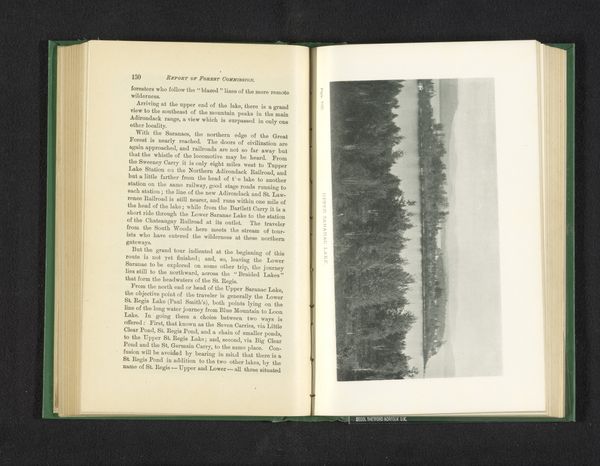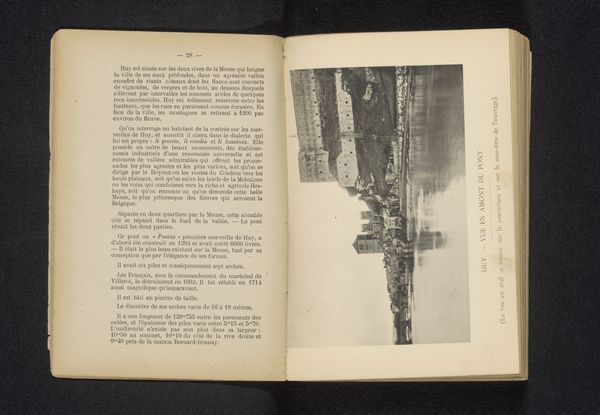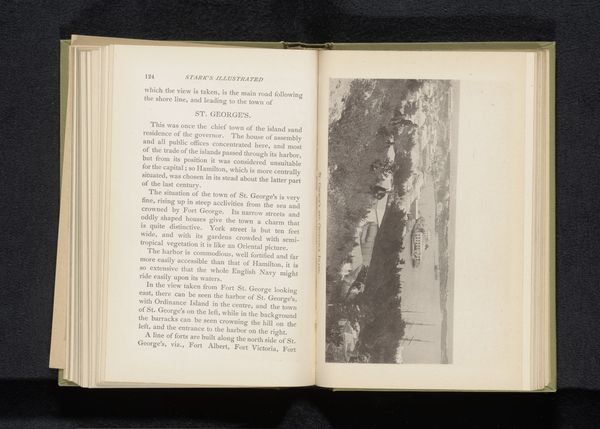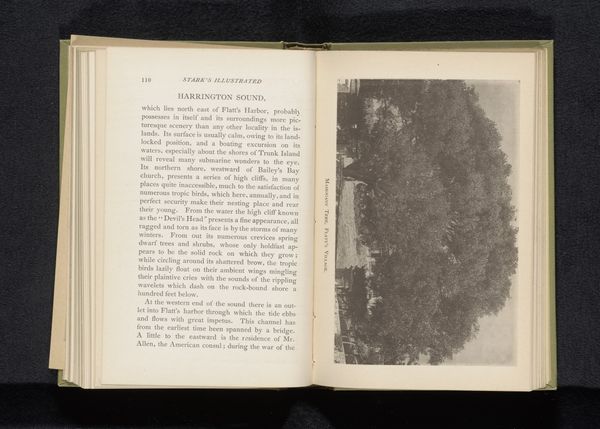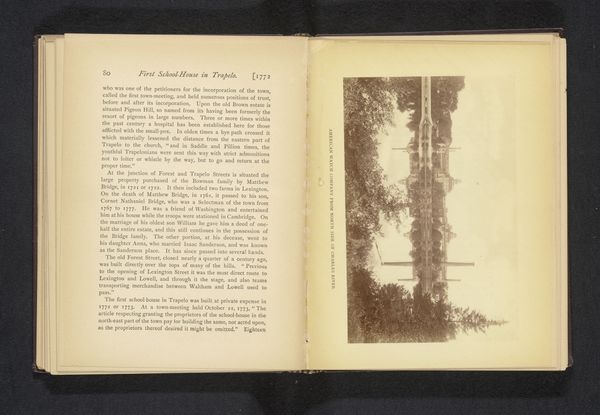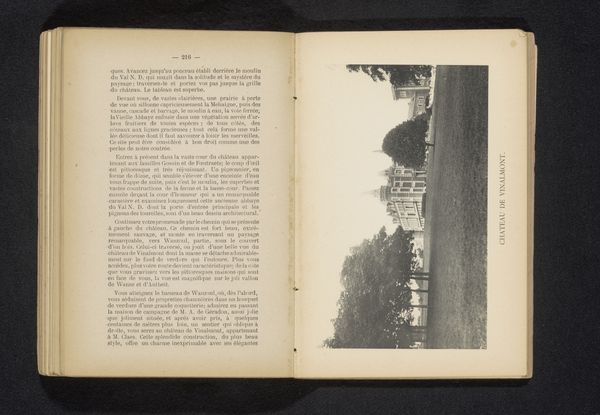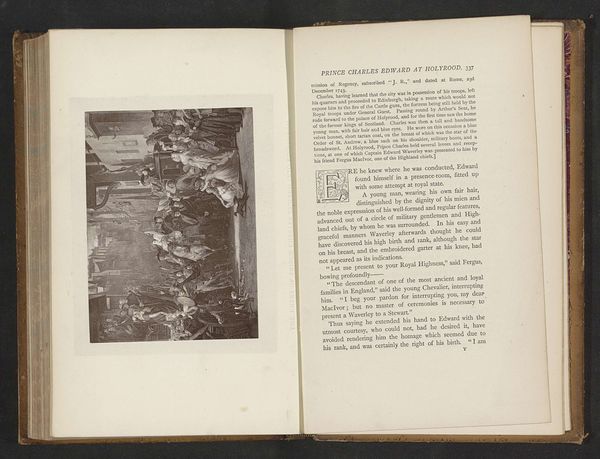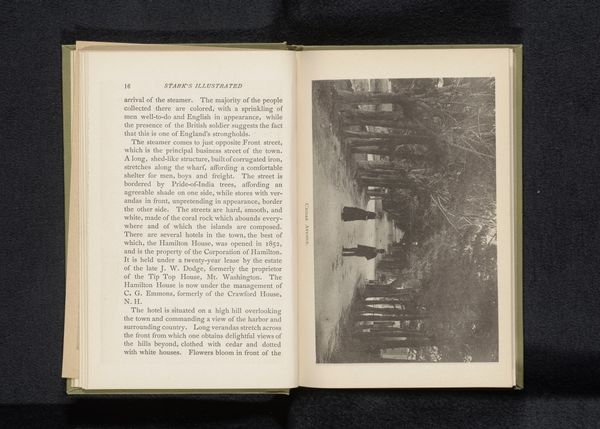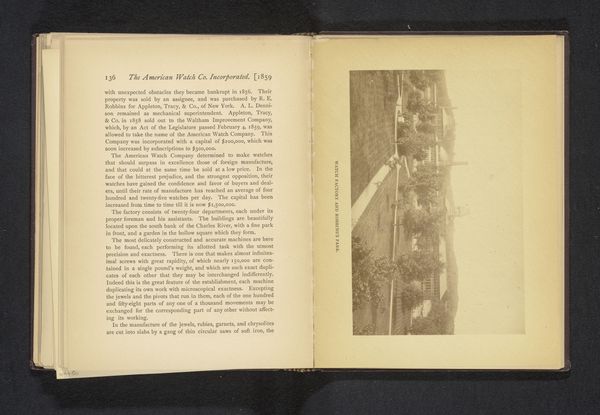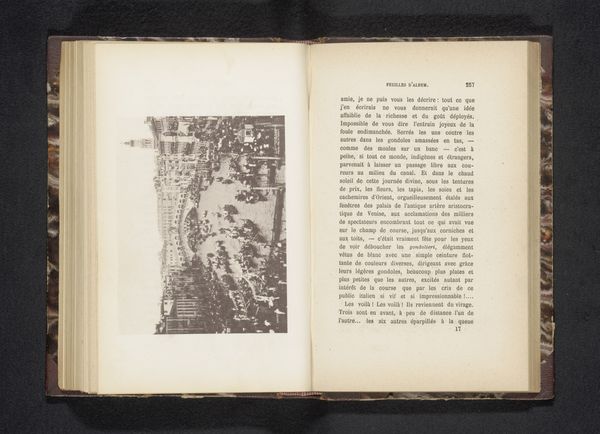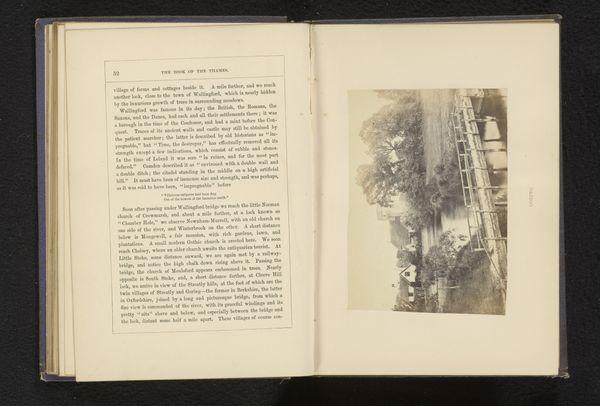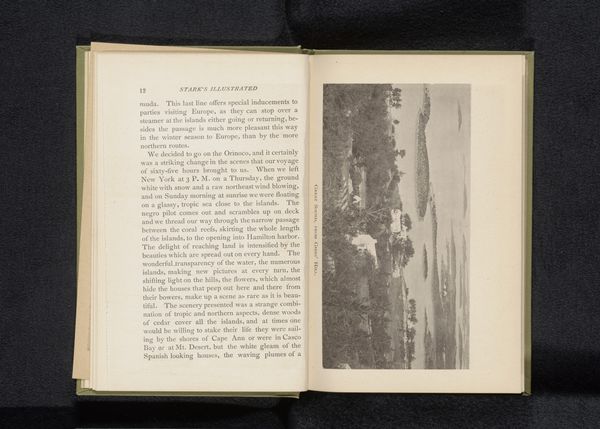
print, paper, photography
#
aged paper
#
still-life-photography
#
homemade paper
# print
#
paper texture
#
paper
#
photography
#
journal
#
historical font
Dimensions: height 98 mm, width 152 mm
Copyright: Rijks Museum: Open Domain
Editor: Here we have a print, specifically a photograph titled "Onion and strawberry field," dating to before 1884. It's displayed in a bound volume of Stark's Illustrated. The stark contrast between the light and dark shades of grey is striking. How do you approach a piece like this from a formalist perspective? Curator: The appeal here lies in its compositional balance. Note the regimented order imposed upon nature through the series of evenly spaced posts; these lend the image structure, serving as a counterpoint to the otherwise organic shapes suggesting the land and the vegetation in the background. Editor: So the tension between order and the natural world is key? Curator: Precisely. We could further analyse the function of the greyscale itself. Note how it simplifies the textures; by depriving the image of naturalistic colour, it shifts the focus toward the gradations of light, enhancing the structural aspects of the field. Ask yourself, does it offer a heightened, or perhaps purified vision of the field? Editor: It does make you look more at the forms themselves, rather than getting caught up in the specifics. Does the rough texture of the aged paper influence your reading of it? Curator: Certainly. The very materiality of the paper stock is integral; its inherent imperfections introduce an element of chance. Note too the subtle visual interplay between the flat photograph and the texture, inviting a tactile response. Editor: That's something I wouldn't have immediately picked up on. I was so focused on what the photograph was representing! Curator: Understanding these formal elements encourages close inspection and unlocks fresh possibilities of appreciating art beyond any narrative considerations. Editor: Right. Seeing the photo as lines, texture, composition first is something that really helps in this case. Thanks.
Comments
No comments
Be the first to comment and join the conversation on the ultimate creative platform.
